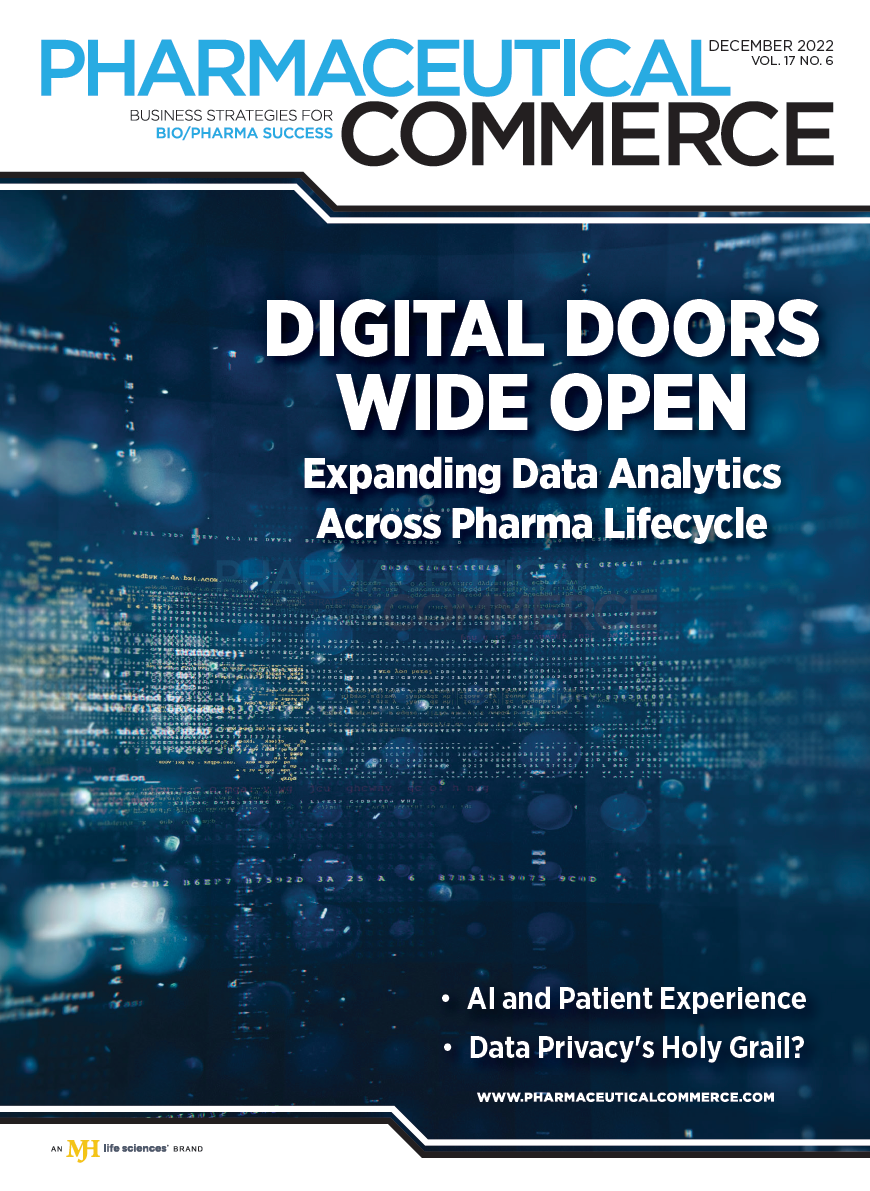Creating the Internet of Supply Chains
Shabbir Dahod

The Internet of Supply Chains (IoSC) is a logical and powerful extension of current efforts to digitally transform what has long been an extremely manual and cumbersome process of communicating with partners through electronic data interchange (EDI), e-mail, phone calls, and spreadsheets.
While many organizations are digitalizing basic interactions with supply chain partners, too often the result is a hub-and-spoke architecture, leaving the organization a digital island with limited ability to collaborate even within its own constraints.
The Internet of Supply Chains links together all of these digital islands into an ecosystem that enables robust communication, collaboration, and orchestration of shared workflows across multiple enterprises. Organizations, their suppliers, and their suppliers’ suppliers, gain precision visibility into the flow of materials and processes because they are connected by interoperable networks that link companies, people, processes, and systems around common business purposes.
The pharmaceutical sector has a keen interest in enhancing supply chain efficiency because ingredient and material suppliers, contract manufacturing organizations (CMOs), contract research organizations (CROs), and third-party logistics (3PL) providers need to be integrated, managed, and monitored to ensure quality, efficiency, and on-time performance and delivery. The Internet of Supply Chains makes all of this and more possible by harnessing the collective intelligence of an entire industry, enabling organizations to identify, predict, and resolve issues before they can adversely affect production.
The power of interoperability
Recently, I wrote in Pharma Commerce about the promise of Industry 4.0, billed as the Fourth Industrial Revolution. Industry 4.0 is often seen as the emergence of Internet of Things (IoT), allowing smart devices to communicate while integrating machine learning and artificial intelligence to enable automated processes and other efficiencies. These advances will bring exciting opportunities.
A foundational enabling element to all of this, however, is the creation of a robust infrastructure to support machine-to-machine communication, network creation and management, and the orchestration of critical business processes. The IoSC is built on one network platform that allows companies with diverse ERP and other management systems to seamlessly communicate around common business processes. It frees organizations, their suppliers, and other partners from the enormous task of integrating disparate systems. Companies only need to integrate to the IoSC once and they will be connected to all other partners on the network.
The scalability and interoperability allows participants to seamlessly interact as if they were under one roof, so they can focus on collaboration and enjoy the benefits of orchestrated workflows.
Visibility and collective intelligence
The IoSC will give all participants visibility that simply has never been possible. A pharma company, for example, would be able to see across the operations of its multiple CMOs or 3PLs—including visibility into the supply chains supporting their needs, as well as the supply chains supporting their partner needs, and beyond.
Based on a common data model, network members—collectively—benefit from an intelligence far greater than any individual person, group, or computer has ever experienced before. The collective intelligence that emerges from such wide and deep visibility can have a profound impact. For example, because the TraceLink network, built on Opus, tracks the movement of over 30 billion product serial numbers across a vast network of pharma supply chain partners, we can predict drug shortages up to 90 days in advance with greater than 80% accuracy.
When I ask organizations about their biggest supply chain needs, the answers come down to: more visibility, greater data accuracy, and the information required to make the right decisions faster. The IoSC enables these critically important elements and allows organizations to eliminate shortages, prevent supply chain disruptions, improve launch performance, reduce inventory, anticipate demand, and ultimately improve profitability. Potential problems can be identified and remedied before they become blocking issues. The same is true for an organization’s 3PLs, its customers, and every other stakeholder and participant.
Internet-level scalability
The platform makes it easy to onboard suppliers and other supply chain and distribution participants. The resulting visibility and capability to collaborate and orchestrate processes—including autonomous machine-to-machine automations—combine to provide internet-level scalability. This is essential because traditional enterprise-level connectivity is too time-consuming and expensive to scale.
Turning again to the pharma sector, the sheer number of CMOs, suppliers of suppliers, 3PLs, and other partnerships can simply become too overwhelming for traditional oversight management. The internet-level scalability of the IoSC provides a powerful and much-needed tool for those responsible for managing CMO and other supplier and partner relationships, particularly given the increased reliance on outsourcing. There are some problems which don’t scale well by just assigning more headcount.
A faster route to digitalization through hybrid connectivity
The common communication backbone enabled by the IoSC—in addition to all of the other benefits already mentioned—also provides a faster route to digitalization. This is especially true for CMOs and similar organizations that have high-value expertise and capabilities in their domains of focus, but may be just beginning their digital transformation journey. The IoSC provides a hybrid connectivity model, with some partners connecting their systems for full B2B interoperability, and others inputting information manually. This allows all supply chain partners to participate at their level of readiness to speed the process of digitalizing end-to-end supply chain networks. The interoperability enabled by the IoSC allows a fluid flow of information that is opening a new era of supply chain collaboration, visibility, and workflow automation.
This can be done . . . now
This all sounds great, but can it be done? The answer is yes. The IoSC is not just a vision, it is the foundation of TraceLink track-and-trace solutions. The Opus platform is currently connecting 290,000 network members to meet pharma industry regulatory requirements. We’ve seen how well an internet-level of scalability works in real-life scenarios, and it is a great place to start a digital transformation journey.
By connecting and collaborating with all tiers of direct suppliers on the IoSC, for example, our customers can leverage real-time visibility into purchase order and production status, capacity, and inventory levels, to collaborate and resolve issues as they arise. Tasks can be assigned to stakeholders across partner companies, enabling multi-enterprise teams to quickly and efficiently manage cross-enterprise work processes.
These are exciting days because we have the technology to make the IoSC a reality that will massively benefit manufacturing and distribution across the globe.
About the Author
Shabbir Dahod is President and CEO of TraceLink.
